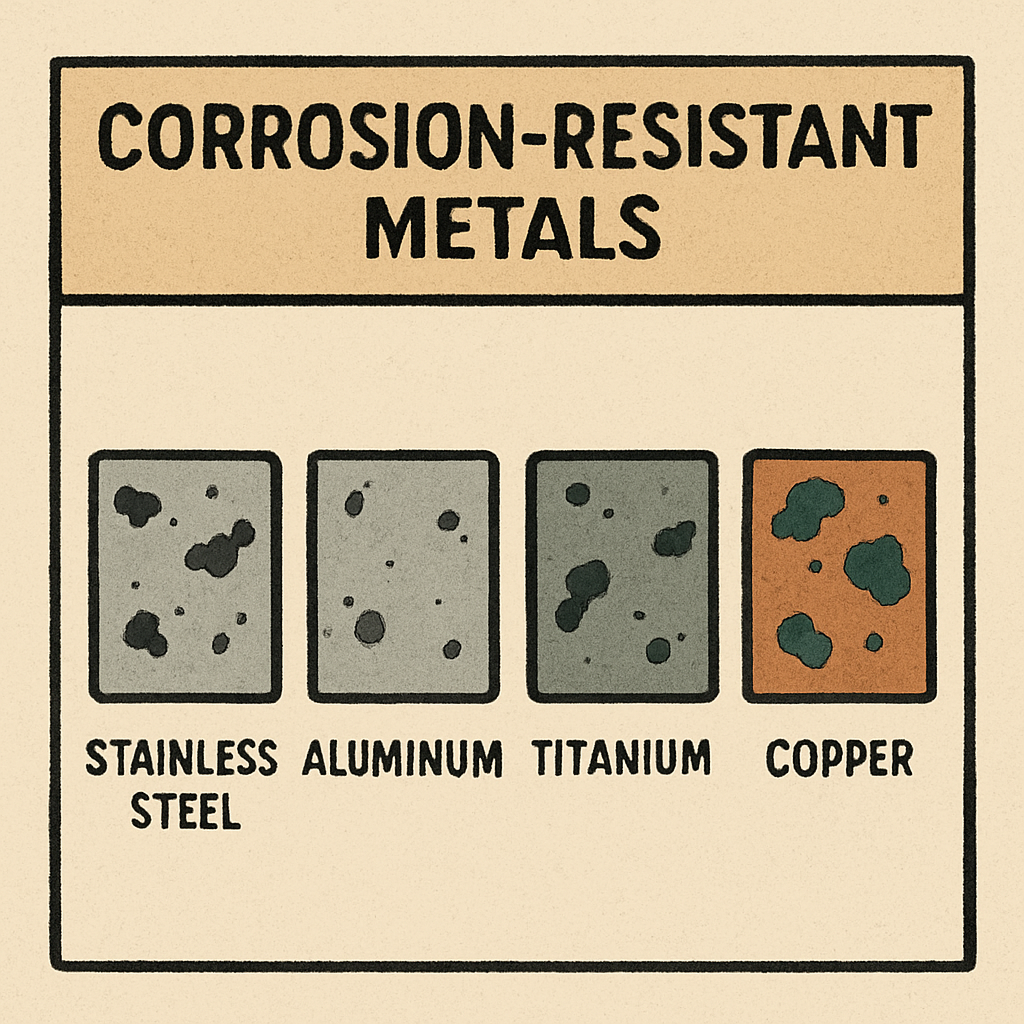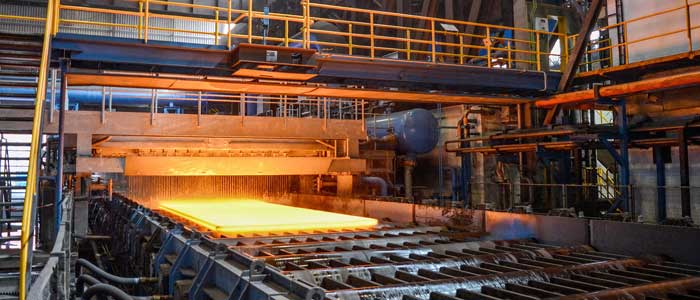In this article, we will explore the performance of corrosion-resistant alloys, delve into various corrosion resistance tests, and discuss the importance of selecting the right materials for industrial applications. As we examine these topics, we will also consider how technological advancements are shaping the future of corrosion resistance in industrial settings.
Corrosion-resistant alloys are specially formulated materials that resist oxidation and degradation. These alloys are crucial in environments where standard metals would quickly degrade, leading to costly repairs and replacements. The development of these alloys involves a deep understanding of metallurgy and the specific environmental conditions they will face. Engineers and material scientists work together to create alloys that can withstand even the most challenging conditions, thereby ensuring the structural integrity of critical components.
The innovation in corrosion-resistant alloys is driven by the need to minimize downtime and maintenance in industries where continuous operation is key. By reducing the frequency of repairs and replacements, companies can maintain productivity and reduce the risk of unexpected failures. This not only preserves the life of the equipment but also supports sustainable practices by decreasing waste and resource consumption.
The Composition of High-Performance Alloys
High-performance alloys typically include elements such as chromium, nickel, and molybdenum. These elements form a protective oxide layer on the metal’s surface, which acts as a barrier against corrosive substances. The careful selection and combination of these elements are what give these alloys their remarkable properties. Each element contributes uniquely to the alloy’s overall performance, allowing for customization based on specific needs.
Chromium, for example, forms a stable oxide layer that prevents further oxidation. This protective layer is self-repairing, meaning that if it is scratched or damaged, it can reform and continue to protect the metal underneath. Nickel enhances the alloy’s resistance to a wide range of corrosive environments, providing versatility in its applications. Molybdenum provides increased resistance to pitting and crevice corrosion, which are common in environments with chloride ions, such as marine and coastal areas. The strategic use of these elements ensures that the alloy can perform under a variety of conditions while maintaining its integrity.
Why Corrosion Resistance Matters
The performance of corrosion-resistant alloys is crucial for industries like oil and gas, marine, and chemical processing. In these sectors, materials are constantly exposed to harsh conditions, including saltwater, chemicals, and high temperatures. The ability to resist these conditions is not just a matter of material choice but a critical factor in operational efficiency and safety. Failure to adequately protect against corrosion can lead to catastrophic failures, environmental disasters, and significant financial losses.
Material Longevity and Cost Efficiency
Using corrosion-resistant alloys not only extends the material’s lifespan but also reduces maintenance costs. By investing in materials that last longer and require less upkeep, companies can achieve significant cost savings over time. The reduced need for repairs and replacements often offsets the initial investment in high-quality materials. Moreover, the reliability of these materials can lead to increased operational uptime, further enhancing productivity and profitability.
In addition to direct cost savings, the use of corrosion-resistant alloys can also contribute to indirect savings. For example, by reducing the frequency of maintenance shutdowns, companies can avoid the associated costs of lost production and labor. Furthermore, the improved safety and reliability of equipment can lead to reduced insurance premiums and liability risks. All these factors combined make corrosion-resistant alloys a wise investment for any industry relying on metal components.
Corrosion Resistance Testing
To ensure that these alloys can withstand their intended environments, they must undergo rigorous corrosion resistance tests. These tests simulate the conditions that the materials will face in real-world applications. By subjecting the alloys to controlled but extreme conditions, engineers can predict their performance and identify potential weaknesses. This proactive approach allows for the refinement of alloy compositions and the development of more effective corrosion prevention strategies.
Common Corrosion Resistance Tests
- Salt Spray Testing: This test exposes the material to a salt-laden mist to evaluate its resistance to saltwater corrosion. It is commonly used for materials in marine environments. The test’s accelerated nature allows for the rapid assessment of a material’s durability, providing valuable insights into its long-term performance.
- Electrochemical Tests: These tests measure the alloy’s response to an electrical current in a corrosive solution, providing insights into its corrosion rate and potential. By analyzing the electrochemical behavior of the material, scientists can better understand the mechanisms of corrosion and develop strategies to mitigate it.
- Immersion Tests: In this test, the material is submerged in a corrosive liquid for a specified period to observe any changes in its structure or performance. This test simulates prolonged exposure to harsh environments, offering a realistic view of how the material will perform over time. The results of immersion tests can guide material selection and design decisions, ensuring that the chosen alloys meet the demands of their intended applications.
Importance of Testing
Corrosion resistance testing is vital to ensure that materials will perform as expected in their intended applications. These tests help manufacturers and engineers select the best materials for their projects, minimizing the risk of failure. By identifying potential issues before they arise in the field, companies can avoid costly downtime and ensure the reliability of their operations. Furthermore, the insights gained from testing can drive innovation in alloy development, leading to the creation of materials with even greater performance capabilities.
Testing also plays a crucial role in quality assurance, ensuring that each batch of alloy meets the required standards before it is deployed in critical applications. This consistency in quality is essential for maintaining the trust of customers and stakeholders, who rely on these materials to perform reliably under challenging conditions.
Selecting the Right Alloy for Your Needs
Choosing the right corrosion-resistant alloy depends on various factors, including the specific environment and the type of corrosion expected. The selection process involves a comprehensive analysis of the operational conditions and the material’s performance requirements. By understanding the unique challenges of each application, engineers can make informed decisions that balance cost, performance, and safety.
Considerations for Alloy Selection
- Environment: Analyze the conditions in which the material will be used. Is it a marine setting, a chemical plant, or an oil refinery? Each environment presents unique challenges. For example, marine environments require materials that can withstand saltwater and humidity, while chemical plants need alloys that resist aggressive chemical reactions.
- Type of Corrosion: Identify whether the material will face general corrosion, pitting, crevice corrosion, or another type. Different alloys offer varying levels of protection against these threats. Understanding the specific corrosion mechanisms at play allows for the selection of an alloy that offers targeted protection, ensuring longevity and reliability.
- Mechanical Properties: Consider the strength, ductility, and thermal stability of the alloy. These properties are crucial for ensuring the material can withstand operational demands. The mechanical performance of the alloy must align with the application’s requirements, as materials that are too brittle or lack sufficient strength may fail under stress.
Real-World Applications of Corrosion-Resistant Alloys
Corrosion-resistant alloys are used in a variety of industries and applications. Here are some examples:
Oil and Gas Industry
In the oil and gas sector, materials are regularly exposed to corrosive substances and high pressures. Alloys like Inconel and Hastelloy are often used in pipelines and drilling equipment due to their excellent resistance to corrosion and high temperatures. The ability to withstand these harsh conditions ensures the safety and efficiency of extraction and transportation processes. These alloys are also critical in preventing leaks and blowouts, which can have severe environmental and economic consequences.
Marine Industry
Saltwater is highly corrosive, making the use of corrosion-resistant materials essential for ships, offshore platforms, and other marine structures. Stainless steel and aluminum alloys are common choices in this industry. The durability of these materials in marine environments contributes to the safety and longevity of vessels and infrastructure, reducing the need for frequent repairs and replacements. This reliability is crucial for the economic viability of maritime operations and the protection of marine ecosystems.
Chemical Processing
In chemical plants, materials must withstand aggressive chemical reactions. Corrosion-resistant alloys ensure the longevity and safety of reactors, storage tanks, and piping systems. By preventing the degradation of critical components, these alloys help maintain the efficiency and safety of chemical processes. This is especially important in industries where the release of hazardous substances could pose significant risks to human health and the environment.
Enhancing Alloy Performance
While corrosion-resistant alloys are designed to withstand harsh conditions, additional measures can further enhance their performance. By combining advanced materials with effective protection strategies, companies can achieve even greater reliability and longevity in their operations.
Protective Coatings
Applying protective coatings to alloys can provide an extra layer of defense against corrosion. These coatings are often used in conjunction with corrosion-resistant materials to maximize durability. The coatings can be tailored to specific environments and corrosion challenges, offering targeted protection. This approach not only extends the life of the alloy but also enhances its performance in extreme conditions, providing a cost-effective solution for long-term protection.
Regular Maintenance and Inspections
Routine maintenance and inspections are crucial for identifying potential corrosion issues before they lead to significant damage. By addressing these problems early, companies can prevent costly repairs and downtime. A proactive maintenance strategy involves regular monitoring and assessment of equipment, allowing for timely interventions and repairs. This approach not only preserves the integrity of the materials but also supports a culture of safety and reliability within the organization.
Conclusion
Corrosion-resistant alloys play a vital role in ensuring the durability and longevity of materials in various industries. Understanding the performance of these alloys, conducting thorough corrosion resistance tests, and selecting the right materials for specific applications are essential steps in protecting against corrosion. The strategic use of these materials not only enhances operational efficiency but also contributes to sustainability by reducing waste and resource consumption.
By investing in high-performance alloys and implementing effective corrosion protection strategies, companies can safeguard their assets and reduce long-term costs. As technology advances, the development of new alloys and testing methods will continue to enhance the performance and reliability of these essential materials. This ongoing innovation is crucial for meeting the evolving demands of modern industries and ensuring their continued success in a challenging global environment.









